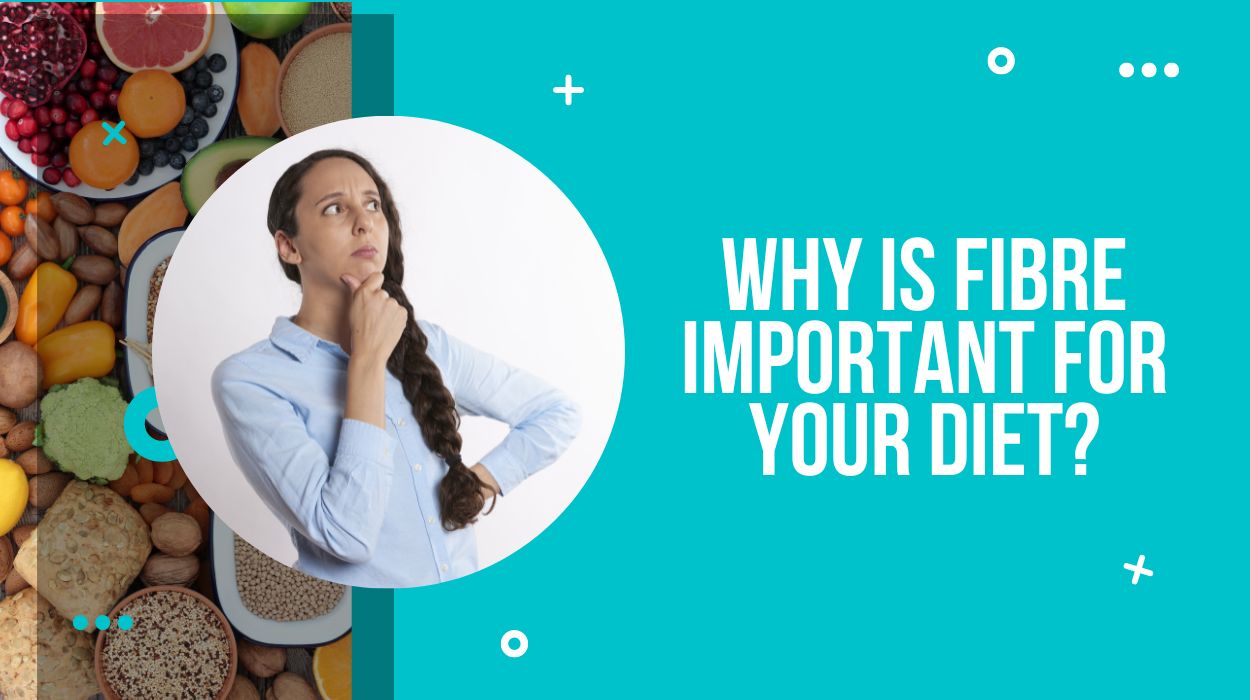When people talk about overall growth and development, we usually prefer proteins and overlook the benefits of plant food. The fibre we receive from fruits, vegetables and grains also play a vital role in your development and growth. It also has numerous health benefits and reduces the risk of certain chronic diseases.
Let us understand more about fibres and why it is important to be included in your diet. Read on to know more…
What Is Fibre?
What makes fibre different from other carbohydrates is that our body cannot digest it into smaller sugar molecules. Since our body cannot digest it, it passes through the stomach to the small intestine and goes out of our body. Dietary fibres are of two types – soluble and insoluble fibre.
Soluble fibres like oatmeal, nuts, beans, apple, etc., can be dissolved in water (looks like gel) and metabolized by the good bacteria in our gut. On the other hand, insoluble fibres cannot be dissolved in water, but it helps with the smooth movement in your digestive system.
According to the American Heart Association (AHA), the recommended intake of fibre for good health for children is given below –
| Age | Fibre Intake |
| 1 to 3 years | 19 grams of fiber |
| 4 to 8 years | 25 grams |
| Girls aged 9 to 18 | Minimum of 26 grams |
| Boys aged 9 to 18 | 31 to 38 grams |
According to the Institute of Medicine, the recommended daily intake of fibre for both men and women of different age groups are listed below –
| Sex | Age | Fibre Intake |
| Female | 09-13 years | 26 grams |
| Female | 14-18 years | 26 grams |
| Female | 19-50 years | 25 grams |
| Female | 50+ years | 21 grams |
| Male | 09-13 years | 31 grams |
| Male | 14-18 years | 38 grams |
| Male | 19-50 years | 38 grams |
| Male | 50+ years | 30 grams |
Why Is Dietary Fibre Important For Your Diet?
We saw how not all fibre was soluble, but our body benefits from the soluble fibre, so we must include fibre in our diet. Let us look at a few reasons how fibre helps us:
1. Lowers Risk Of Heart Diseases

According to studies conducted by Harvard, there was about a 40% lower risk of coronary heart disease in both men and women in relation to their total dietary fibre intake. Consuming fibre is also known to have positive effects on high blood pressure, insulin level, low level of HDL and so on, all of which can lead to heart diseases.
Source: https://www.hsph.harvard.edu/nutritionsource/carbohydrates/fiber/
2. Controls Type 2 Diabetes

In simple words, a person is diagnosed with type 2 diabetes when the person consumes food with high sugar content (and low fibre content) regularly. Studies conducted on men and women show how there has been a significant reduction in the risk of type 2 diabetes due to cereal fibre consumption. Unlike refined cards, high viscosity, soluble fibres with a lower glycemic index only cause a minute spike in blood sugar.
Source:https://www.ncbi.nlm.nih.gov/books/NBK279012/
https://pubmed.ncbi.nlm.nih.gov/12197996/
https://pubmed.ncbi.nlm.nih.gov/15277155/
3. Reduction In Cholesterol Level

Consuming soluble fibre also helps to reduce the cholesterol level, but unlike the previous ones, the change is not very significate. The amount is compacity lesser since our body can only absorb so much fibre in one go. However, certain other studies have also found a higher level of cholesterol reduction as the fibre intake increases.
4. Decreases Risk Of Diverticular Disease
The most common diverticular disease is the inflammation of the intestine. According to a study conducted on male health professionals in the age group between 40-75 years, the insoluble fibre component did have a positive effect as the risk of diverticular diseases decreased considerably.
5. Helps With Constipation

You may wonder how fibre helps with your constipation troubles? Well, fibre relieves and, to an extent, prevents constipation problems by pulling water into the colon. This results in softer but bulkier stools.
However, there has been contradicting studies, some of which show no improvement in constipation problems. Eating the correct type of fibre (like psyllium) will help with the constipation problems, while consuming the wrong kind can worsen our situation.
6. Lowers The Chance Of Breast Cancer

Studies show that higher fibre intake lowers the risk of breast cancer for women in their adolescence and early childhood. Both the intake of soluble fibre and insoluble fibre is associated with lower breast cancer risks. So, it’s recommended for women to consume food containing high-fibre content like fruits, vegetables, and grains.
Source:
https://www.ncbi.nlm.nih.gov/pmc/articles/PMC4771124/
7. Increases The Number Of Healthy Gut Bacteria

There are about 38 trillion bacteria cells present in your large intestine, and they are essential for the proper functioning of your immune system and brain. We know that when fats, crabs, and proteins enter our system, it is absorbed by our body before it reaches the intestine.
So the only one that isn’t digested and absorbed is fibre, but there are enzymes in the intestine to digest fibre. So, fibre promotes the growth of the good bacteria present in the intestine, which functions as prebiotics, lowering the risk factor related to obesity and metabolic syndrome.
You May Also Like To Read:
Essential Supplements For Women
Best Antioxidant Tablets In India
Your Takeaway
Fibre is essential as it helps to regulate many diseases and increase the good bacteria in the gut. However, if you plan to add more fibrous food into your diet, don’t add it all at once. Our body cannot cope with the sudden change in routine. If you consume excess fibre, it can cause cramps, bloating, constipation, and so on.
I hope you found this article helpful. Do you know of any other benefits provided by fibrous food? Please do let us know in the comment section below.


